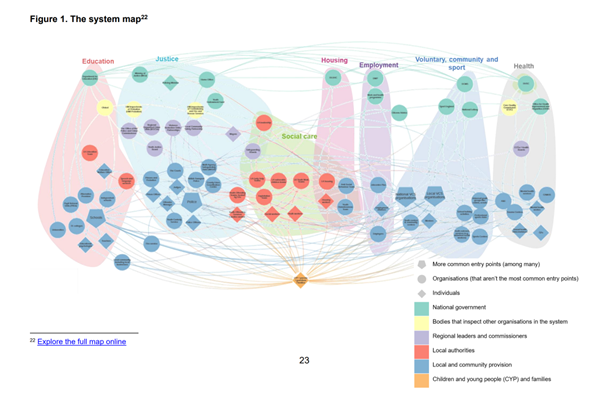At a glance
The Department for Education (DfE) and the Youth Endowment Fund (YEF) wanted to explore how the system of support around young people at risk of involvement in serious violence, shapes the experiences of young people and their families. IFF delivered participatory research, working with national policymakers, regional commissioners, ‘at risk’ young people and the frontline practitioners who work with them, to map the system of support serious violence. This was used as a starting point to reflect on the strengths and weaknesses of the current system.
About the client
Youth Endowment Fund (YEF) is the Home Office-funded What Works Centre for serious youth violence. The Department for Education (DfE) is responsible for children’s services and education, including early years, schools, higher and further education policy, apprenticeships and wider skills in England.
Challenges and objectives
The involvement of children and young people aged 0 to 25 years, in serious violence as victim or perpetrator, has serious consequences for the young people involved, their peers and families, and huge costs for society. The Serious Violence Research and Analysis team within DfE and the YEF wanted to begin to explore how the systems of support for ‘at risk’ young people shapes the experiences of young people and their families, and why some young people still go on to become involved in serious violence. The study was intended to be ‘foundational’ – that is, a starting point for hypotheses to inform further research in future.

Solution
We conducted 41 discussions with national policymakers, regional commissioners, practitioners and ‘at risk’ young people. These sessions were participatory, with us working with participants to map the system of organisations and individuals that ‘at risk’ young people might interact with or be affected by. Convening these discussions with different groups of stakeholders in the system allowed us to see the system from different perspectives.
This gradually built a hybrid map, using Kumu mapping software, and the emerging map was used as a starting point for discussion with participants, around the strengths and weaknesses of the system and how it shapes the experiences of ‘at risk’ young people and their families.
One challenge in doing this was how to represent the system in depth while recognising that it differs from region to region. To address this, we worked with DfE and YEF to select four regions with contrasting characteristics, as the focus. Another challenge was to reach the ‘at risk’ young people and ensure a supportive interview experience. To achieve this we worked with frontline practitioners to access relevant young people in an appropriate setting.
As we built the interactive map and analysed and wrote up our findings iteratively, we were able to keep DfE and YEF up to date with the findings that were emerging.

“We commissioned IFF to conduct research and develop a system map to visually represent the youth justice system. We were thoroughly impressed with their work. The team demonstrated exceptional responsiveness, keeping us informed and engaged throughout. Deadlines were met and risks were identified and mitigated against. The final outputs offered really clear and insightful analysis. We would highly recommend their services.”
Hashim Ahmed,
Research Manager, Youth Endowment Fund
Impact
The evidence gave DfE and YEF a range of hypotheses about the characteristics of the current system, including that: health services are often missing from the conversation around serious violence risk; and a reactive system that lacks preventative support but then offers over-saturation of services once a situation escalates. The findings, and the dynamic map, were published and supported a cross-government workshop on youth violence.




